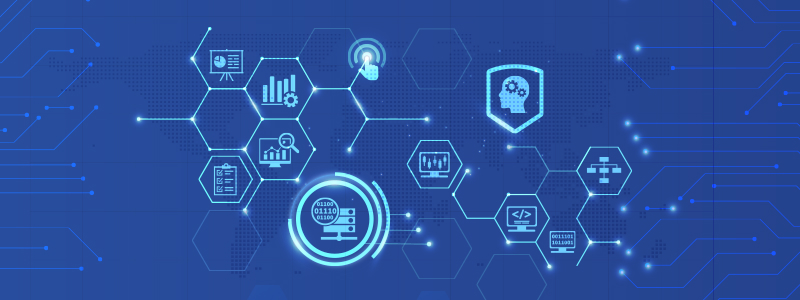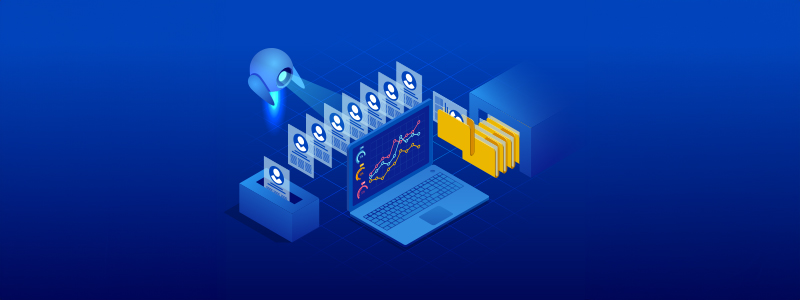
Agentic AI vs Generative AI: Understanding the Key Differences
You’ve probably interacted with AI more times than you can count—whether it’s getting a movie recommendation, using an AI-powered chatbot, or watching AI-generated content. But have you ever stopped to think about how these AI systems actually work? Not all AI is built the same way, and two key paradigms are emerging as game-changers: Agentic AI and Generative AI.
While both leverage advanced machine learning and deep learning models, their core functions, decision-making capabilities, and applications differ significantly.
So, what sets them apart? Understanding these differences is essential as businesses and developers look for ways to optimize operations, enhance automation, and create more intelligent AI-driven solutions. Let’s break it down.
What is Generative AI?
Generative AI refers to AI systems designed to create content, whether it’s text, images, music, code, or even video, based on learned patterns from vast datasets.
Some of the most well-known generative AI models include ChatGPT, which generates human-like text responses, and DALL·E, which creates realistic images from text descriptions. These systems are incredibly powerful, often blurring the line between human and machine-generated content.
Key Capabilities of Generative AI:
- Content Generation: Creates new and original outputs based on prompts.
- Pattern Recognition: Learns from large datasets to generate contextually relevant responses.
- Enhancement & Summarization: Can refine existing content, summarize long-form text, and rephrase ideas with clarity.
- Creative Assistance: Supports human creativity in design, storytelling, and ideation.
However, generative AI operates in a reactive manner—it responds to user inputs but does not independently make decisions or take proactive actions.
What is Agentic AI?
Agentic AI, on the other hand, is designed to act autonomously, making decisions and executing tasks with minimal human intervention. These AI systems don’t just generate responses; they reason, plan, and take action based on objectives.
Unlike generative AI, which relies on human prompts, agentic AI can self-direct its actions based on a set of goals. This makes it particularly useful in automation and complex decision-making processes.
Key Capabilities of Agentic AI:
- Autonomy: Can operate independently without constant human input.
- Goal-Oriented Planning: Breaks down complex tasks into actionable steps.
- Adaptability: Adjusts its actions based on changing environments or objectives.
- Continuous Learning: Can refine its decision-making through feedback loops and real-world interactions.
For example, AI-driven personal assistants that schedule meetings, optimize workflows, or even negotiate contracts on your behalf exemplify agentic AI’s potential.
Agentic AI vs Generative AI: Key Differences
While both types of AI leverage machine learning, their underlying functionalities and use cases are vastly different. Let’s take a deeper look at their fundamental differences:
1. Autonomy vs. Reactivity
- Generative AI is reactive—it responds to inputs but does not take independent actions. If you don’t provide a prompt, it does nothing.
- Agentic AI is autonomous—it can initiate actions, make decisions, and execute tasks based on predefined goals without waiting for user input.
For instance, ChatGPT won’t generate a response unless you ask it a question, but an AI-powered virtual assistant can proactively remind you of deadlines, book meetings, or optimize your schedule.
2. Purpose and Functionality
- Generative AI is designed for content creation and idea generation.
- Agentic AI is built for decision-making, task execution, and strategic planning.
If you need an AI to write a blog post, generate an image, or create music, you’d turn to generative AI. However, if you need an AI that can independently analyze data, plan a series of actions, and execute tasks without supervision, agentic AI is the right fit.
3. Interaction Style
- Generative AI is user-driven, meaning it needs direct human input (e.g., a prompt) to function.
- Agentic AI is goal-driven, meaning it follows objectives and adapts its actions accordingly.
For example, in an e-commerce business, a generative AI tool might help create compelling product descriptions, but an agentic AI system could autonomously manage your inventory, adjust pricing based on demand, and optimize order fulfillment.
4. Decision-Making and Problem-Solving
- Generative AI does not make decisions—it simply generates outputs based on learned patterns.
- Agentic AI evaluates multiple options, makes informed decisions, and refines its approach over time.
A customer service chatbot powered by generative AI can provide scripted responses, but an agentic AI-driven support system can assess customer sentiment, escalate urgent issues, and proactively offer solutions without human intervention.
5. Learning and Adaptability
- Generative AI improves based on additional training data but does not learn from experience dynamically.
- Agentic AI can continuously refine its actions through reinforcement learning, feedback loops, and adaptive decision-making.
A self-driving car, for example, uses agentic AI principles to monitor road conditions, make real-time driving decisions, and adjust to unexpected obstacles.
| Feature | Generative AI | Agentic AI |
| Autonomy | Reactive—requires user input | Autonomous—acts independently |
| Purpose | Content creation and idea generation | Task execution and decision-making |
| Interaction Style | User-driven—requires prompts | Goal-driven—executes tasks proactively |
| Decision-Making | Does not make decisions | Evaluates options and takes actions |
| Learning Approach | Learns from large datasets | Learns dynamically from experience |
| Adaptability | Limited—based on training data | High—adjusts in real-time |
| Applications | Writing, art, music, design, coding | Personal assistants, automation, robotics |
| Example Tools | ChatGPT, DALL·E, Midjourney | AI-powered assistants, self-driving cars |
| Proactive Capabilities | Lacks initiative—waits for input | Takes initiative based on objectives |
| Complexity of Tasks | Suitable for structured creative tasks | Handles complex, multi-step workflows |
| Real-time Problem Solving | Cannot adjust dynamically | Adapts to new situations on the fly |
Real-World Applications of Generative AI and Agentic AI
Generative AI creates, while Agentic AI acts. Their applications range from automating workflows to enhancing creativity and intelligence. Here’s how each is transforming the digital landscape.
Use Cases of Generative AI
- Automated Content Generation
Generative AI is used to create high-quality written content, including blog posts, reports, emails, and marketing copy. Businesses leverage it to automate content production at scale while maintaining coherence and engagement.
- AI-Generated Media & Design
Advanced models generate realistic images, videos, and artwork for advertising, entertainment, and digital media. Designers use AI to create visuals, prototypes, and branding assets with minimal effort.
- AI-Assisted Code Generation
Developers use Generative AI to write, optimize, and debug code efficiently. AI-powered coding assistants, such as GitHub Copilot and OpenAI Codex, suggest functions, generate scripts, and automate repetitive programming tasks, accelerating software development.
- Interactive Conversational Agents
Generative AI powers chatbots and virtual assistants that engage in human-like conversations. Tools such as Gemini, ChatGPT, and Claude provide context-aware responses, summarize discussions, and generate creative replies to enhance user interaction.
Use Cases of Agentic AI
- AI-Powered Virtual Assistants and Customer Support
Agentic AI enables virtual assistants to handle customer inquiries, troubleshoot issues, and provide personalized recommendations. These AI-driven agents learn from interactions, improving their ability to assist users over time.
- Intelligent Business Process Optimization
Businesses integrate agentic AI to streamline workflows, automate approvals, and manage operational tasks. The AI autonomously handles document processing, compliance checks, and routine decision-making, reducing manual workload.
- Autonomous Software Development
Agentic AI takes coding a step further by autonomously debugging errors, optimizing performance, and executing full development workflows. These AI-driven agents can analyze requirements, generate functional code, test solutions, and even deploy applications with minimal human oversight.
- AI-Driven Cybersecurity and Threat Detection
Agentic AI continuously monitors networks, detects security threats, and autonomously responds to cyberattacks. Organizations use AI-driven security systems to prevent data breaches and mitigate risks in real time.
Final Thoughts
As AI continues to evolve, the distinction between generative AI and agentic AI is becoming less about differences and more about how they complement each other. Generative AI unlocks creativity, while agentic AI brings autonomy—together, they pave the way for AI systems that don’t just assist but take initiative, learn from interactions, and drive real outcomes.
The future isn’t about choosing between these technologies but integrating them for more intelligent, adaptive automation. Businesses are moving beyond basic AI-driven efficiencies to fully autonomous ecosystems where AI anticipates needs, executes complex workflows, and optimizes decisions with minimal human oversight.
Solutions like Astera are bridging this gap, empowering organizations with intelligent automation that simplifies complex data processes. With visual, drag-and-drop functionality, businesses can harness AI without technical barriers, making data-driven decision-making faster and more accessible.
Are you ready to take the next step? Let’s explore the possibilities together.
 Astera AI Agent Builder - First Look Coming Soon!
Astera AI Agent Builder - First Look Coming Soon!

